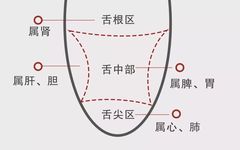In Traditional Chinese Medicine (TCM), the practice of “observing, listening, questioning, and palpating” is essential. When visiting a hospital, doctors not only inquire about symptoms but also ask patients to stick out their tongues. By examining the tongue, doctors can gain insights into the patient’s condition.
This method is known as “tongue diagnosis” in TCM, which allows practitioners to understand the patient’s health by observing changes in the tongue’s morphology.
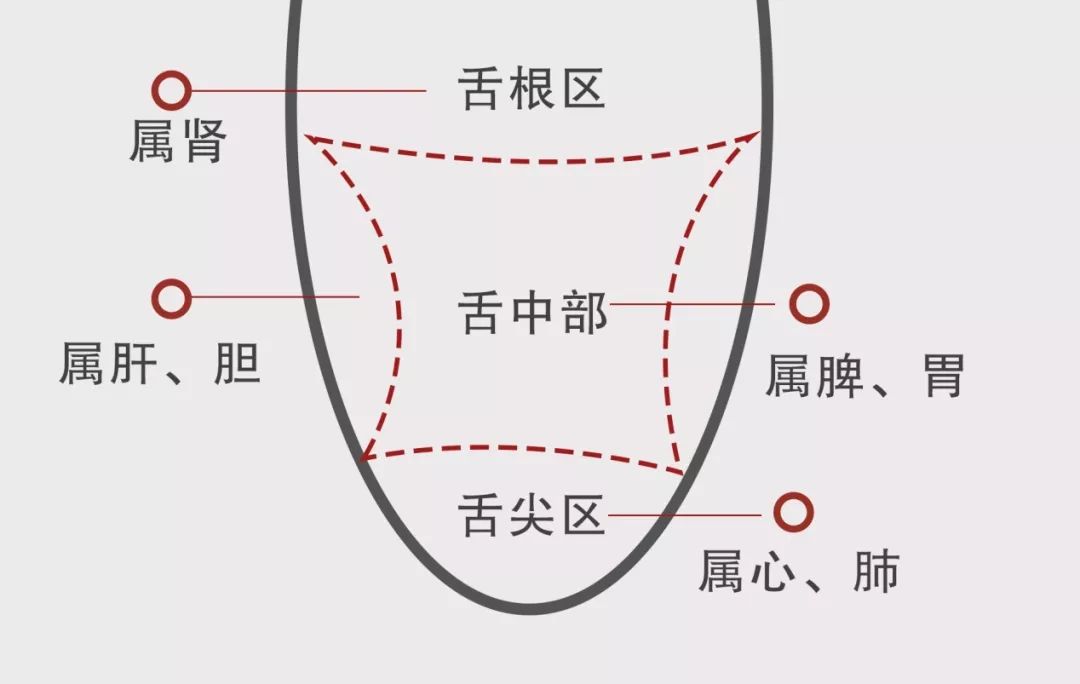
When examining the tongue, the focus is primarily on the tongue body and tongue coating. The tongue body may be unfamiliar to many; it refers to the muscular tissue of the tongue, also known as the tongue body. The tongue coating is more commonly known; it is a layer of coating attached to the tongue body, which can often be seen clearly in the mirror while brushing teeth in the morning. Today, we will first discuss the tongue body.
 Understanding the Tongue Body
Understanding the Tongue Body Normal Tongue Body
Normal Tongue Body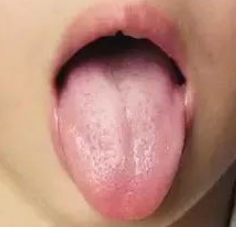 When observing the edge of the tongue, we look at the color within this area. If the body is healthy, the color of the tongue body should be pale red, also known as pale red tongue (淡红舌), with a thin white coating (薄白苔).There are two abnormal tongue body conditions:First, the tongue body develops towards pale white (淡白).
When observing the edge of the tongue, we look at the color within this area. If the body is healthy, the color of the tongue body should be pale red, also known as pale red tongue (淡红舌), with a thin white coating (薄白苔).There are two abnormal tongue body conditions:First, the tongue body develops towards pale white (淡白).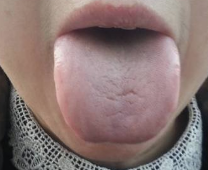 The color of the tongue body is not as rosy, but pale white, known as pale white tongue (淡白舌), which is quite common. A more severe condition is withered white tongue (枯白舌), which is rare; typically, when withered white tongue is observed, it indicates that the person’s health is already quite poor.Second, the tongue body develops from pale red to red (淡红向红).
The color of the tongue body is not as rosy, but pale white, known as pale white tongue (淡白舌), which is quite common. A more severe condition is withered white tongue (枯白舌), which is rare; typically, when withered white tongue is observed, it indicates that the person’s health is already quite poor.Second, the tongue body develops from pale red to red (淡红向红).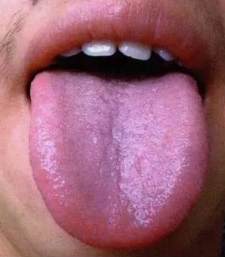 The tongue body first turns red, then becomes crimson (绛色). Further progression leads to a bluish-purple color, resembling a purplish hue.
The tongue body first turns red, then becomes crimson (绛色). Further progression leads to a bluish-purple color, resembling a purplish hue. Identifying Specific Issues
Identifying Specific Issues White Tongue BodyIn TCM, a tongue body that is pale white generally indicates the presence of cold or deficiency of Qi and blood within the body. The deeper the white color, the heavier the cold and the more deficient the Qi and blood.After reading many TCM articles, one should learn to analyze dialectically. The cold referred to in TCM is divided into external cold and internal cold. (Similar to dampness, which is also divided into internal dampness and external dampness.)What is External Cold?
White Tongue BodyIn TCM, a tongue body that is pale white generally indicates the presence of cold or deficiency of Qi and blood within the body. The deeper the white color, the heavier the cold and the more deficient the Qi and blood.After reading many TCM articles, one should learn to analyze dialectically. The cold referred to in TCM is divided into external cold and internal cold. (Similar to dampness, which is also divided into internal dampness and external dampness.)What is External Cold? For example, in the winter in the north, it is very cold outside. If one wears little clothing, it is easy to catch a cold, and the tongue body will turn pale white. This is due to external cold invading the body, which is classified as external cold.What is Internal Cold?
For example, in the winter in the north, it is very cold outside. If one wears little clothing, it is easy to catch a cold, and the tongue body will turn pale white. This is due to external cold invading the body, which is classified as external cold.What is Internal Cold? Internal cold refers to excessive cold within the body. For instance, in summer, when it is very hot outside, while others dress lightly, you still wear a thin jacket and feel cold when the wind blows. This indicates a deficiency of kidney Yang, leading to internal cold.It is important to note that whether caused by external cold or accumulated internal cold, it indicates that the body is in a cold state. This body cold may also be caused by multiple factors, with internal and external causes intertwining, leading to bodily cold.Red Tongue BodySome individuals have a red tongue body, which generally indicates the presence of heat within the body. The redness of the tongue body due to heat can also be divided into external heat and internal heat.What is External Heat?Generally, when the weather is very hot or when one suddenly enters a very hot environment, far exceeding the body’s normal tolerance, it can create a warm pathogen, causing the tongue body to turn red.
Internal cold refers to excessive cold within the body. For instance, in summer, when it is very hot outside, while others dress lightly, you still wear a thin jacket and feel cold when the wind blows. This indicates a deficiency of kidney Yang, leading to internal cold.It is important to note that whether caused by external cold or accumulated internal cold, it indicates that the body is in a cold state. This body cold may also be caused by multiple factors, with internal and external causes intertwining, leading to bodily cold.Red Tongue BodySome individuals have a red tongue body, which generally indicates the presence of heat within the body. The redness of the tongue body due to heat can also be divided into external heat and internal heat.What is External Heat?Generally, when the weather is very hot or when one suddenly enters a very hot environment, far exceeding the body’s normal tolerance, it can create a warm pathogen, causing the tongue body to turn red.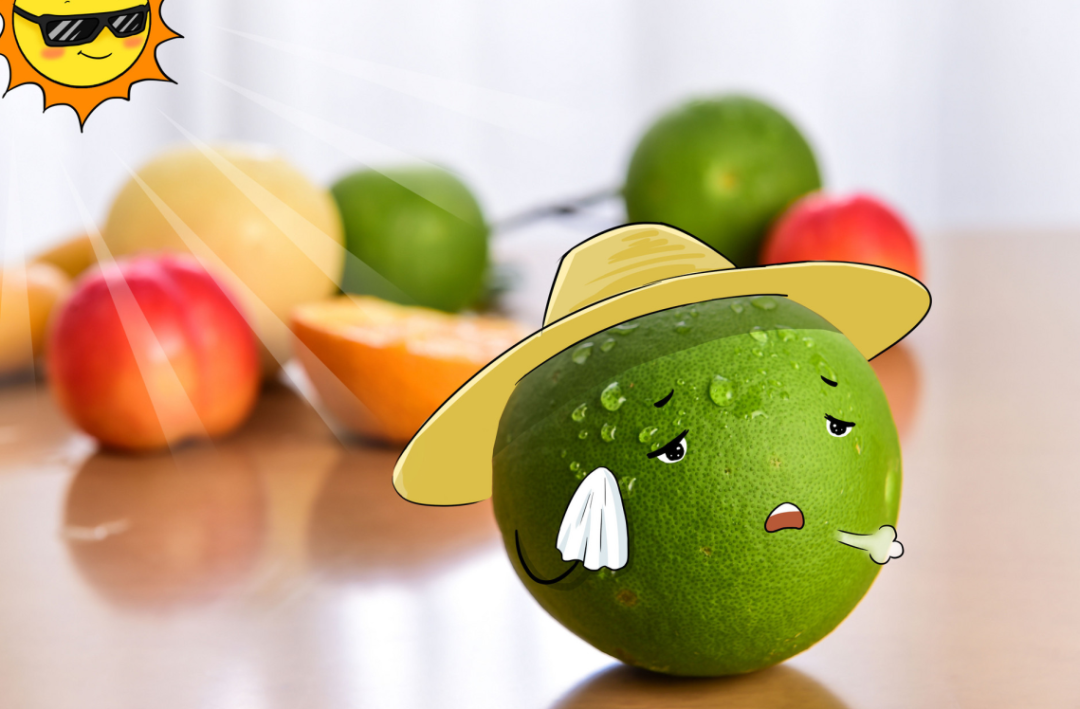 Warm pathogens can lead to warm diseases, which are often infectious and present symptoms leaning towards heat signs, such as dry stools, sore throat, and fever. Therefore, patients with warm diseases will have a red tongue body.What is Internal Heat?In TCM, it is believed that Yin deficiency can generate heat. Yang represents fire, while water represents Yin. Within the human body, body fluids and blood are considered Yin, primarily used to nourish the body. When Yin is deficient, meaning body fluids and blood are insufficient, it is easy to produce false heat. The greater the internal heat, the more Yang energy becomes excessive, leading to symptoms of false heat, which can be observed as a small, red tongue body, thin coating, and a dry tongue surface.
Warm pathogens can lead to warm diseases, which are often infectious and present symptoms leaning towards heat signs, such as dry stools, sore throat, and fever. Therefore, patients with warm diseases will have a red tongue body.What is Internal Heat?In TCM, it is believed that Yin deficiency can generate heat. Yang represents fire, while water represents Yin. Within the human body, body fluids and blood are considered Yin, primarily used to nourish the body. When Yin is deficient, meaning body fluids and blood are insufficient, it is easy to produce false heat. The greater the internal heat, the more Yang energy becomes excessive, leading to symptoms of false heat, which can be observed as a small, red tongue body, thin coating, and a dry tongue surface. Therefore, the transition of tongue body color from white to red generally indicates a change in the body’s condition from cold to heat. Whether due to internal or external causes, this can be reflected in the tongue appearance.By observing the color of the tongue body, one can determine the state of the body. If external heat is significant, we can clear the heat; if internal Yin is insufficient, we can nourish the body with herbal medicine to reduce false heat and restore the tongue body to its normal color.
Therefore, the transition of tongue body color from white to red generally indicates a change in the body’s condition from cold to heat. Whether due to internal or external causes, this can be reflected in the tongue appearance.By observing the color of the tongue body, one can determine the state of the body. If external heat is significant, we can clear the heat; if internal Yin is insufficient, we can nourish the body with herbal medicine to reduce false heat and restore the tongue body to its normal color.
Copyright Statement: This article is reproduced from the internet. If there is any infringement, please contact us for deletion. The content is reproduced and the various prescriptions mentioned are for reference and learning only. They should not be used as prescriptions; please do not use them blindly. This platform does not bear any responsibility for any consequences arising from this. We look forward to your original submissions at: [email protected]

